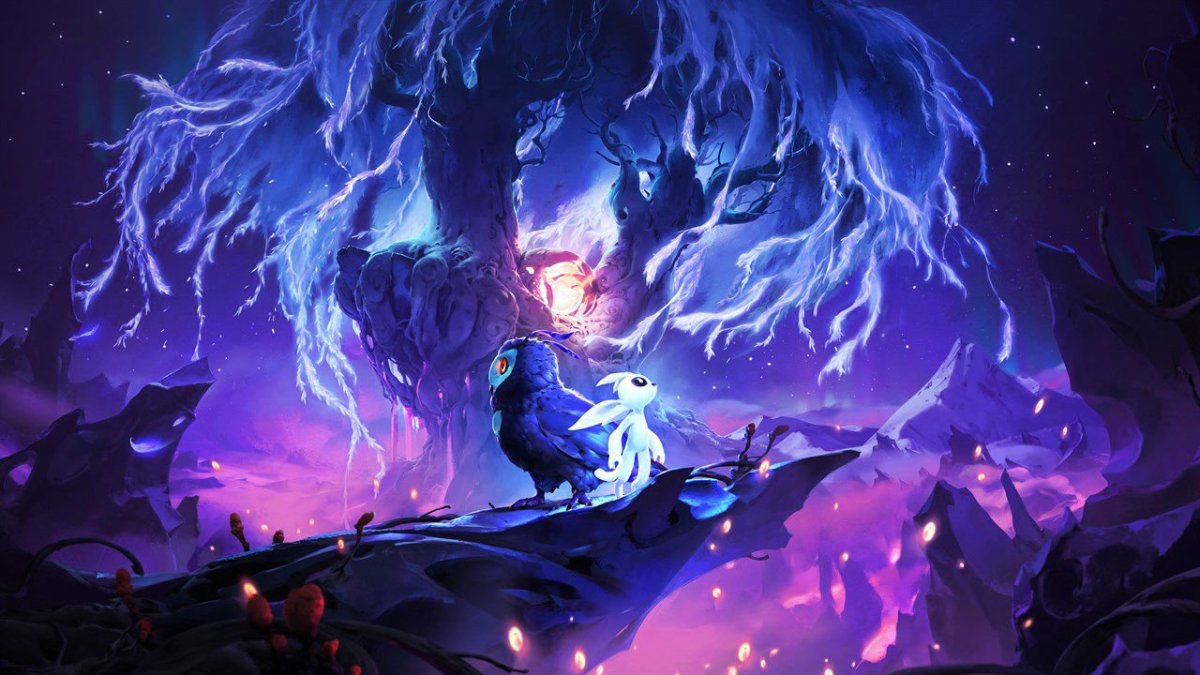Where there’s a will…
The cliched “games are art” discussion is bound to cause eye-rolling in 2020, but Ori and the Blind Forest feels like one of those examples that’s just unanimously celebrated.
Much like a well-animated Don Bluth film, Ori still holds up today both in terms of theme and aesthetic value, and that’s to say nothing of the strong platformer foundation that Moon Studios built to hold it all together. It’s a masterpiece.
And five years later, nearly to the day, they’ve done it again.

Ori and the Will of the Wisps (PC [reviewed], Xbox One)
Developer: Moon Studios
Publisher: Xbox Game Studios
Released: March 11, 2020
MSRP: $29.99
The first thing you should know about the sequel is that Moon Studios pretty much dials everything up. Environments no longer contain just shades of beauty, but show a sort of emotional growth for the studio as a whole. Will of the Wisps is more stylized, without fear of delving into more harrowing territory to combat that ever-encroaching idyllic bliss that Ori so effortlessly exhumes.
I mean…just look at any screens for it.
The minimalist tear-jearker of a story is also back, and partly focuses on the relationship between Ori and his owl-friend Ku: an owl that descended from a creature in the first game. This manifests itself both narratively and mechanically, in a way that emphasizes their friendship in a meaningful way (a joyride, just after Ku learns to fly, leads them to a new region, the basis for the sequel). Moon really knows how to hit those emotional high notes, and when that score kicks in: oh man! There’s also a bit more drama and a few heavier themes to boot, which I won’t spoil here.
To its credit, Will of the Wisps immediately tries to differentiate itself from its predecessor in that Ori is no longer mashing buttons to shoot out short-range projectiles. Instead, he’s stripped of his powers, Metroid style, and is initially forced to bust up enemies with a melee torch: which quickly becomes a much more elegant light sword. As a result, the sequel’s combat feels a little more deliberate, and at times, tougher.
A lack of a quick dash at the start puts a damper on combat as you’re manually maneuvering around attacks instead of comboing in escapes, but Ori was never really a frame-perfect action game. Once you become more agile things heat up, but not until that point. Still, it’s a thrill to hit that perfect ability window right before an enemy comes at you, then dodge. That sort of drama wasn’t as electric in the original and you can clearly see evolution with the sequel.
Being more keyed into the mechanical aspects of the Ori series extends to the spirit shard system: where players can select up to three abilities (at first; you earn more slots) to augment the latent upgrades (like double jump) Ori acquires during his travels. Instead of just following a skill tree you’ll eventually complete, the way you play Ori is likely going to be different than the way someone else plays him. Above all, it helps age subsequent playthroughs, and dual-purpose key abilities (like the bow and arrow, which triggers puzzles and roughs up enemies) also nudge players to use skills throughout the game, not just for their niche in-level purpose.
The world feels bigger, with more questgivers, vendors and more outlets to spend currency: including a really cute village-building minigame. The map is more helpful and highlights nearly everything you need from the get-go to encourage exploration. If you liked the dramatic chase sequences from the original they’re back: with new challenges in tow and more garish creatures to run from. These still work incredibly well and lead to some of the best moments in the game.
They will lead to plenty of deaths, however. The whole “save anywhere” gimmick is also mostly gone, replaced with generous checkpoints. It’s somehow more forgiving and more demanding, all at once: but with the former favoring exploration, Ori‘s core strength, it comes out as a net positive. The ability to skip cutscenes by default in 2020, the era of speedrunning, is a no-brainer.
So here’s the bad news: I played both versions of the game, and encountered framerate issues on my Xbox One X (my PC tests, which are indicative of this review, were cleaner), but it’s a weird situation. Upon first booting up the game I noticed slowdown throughout, as well as framerate drops in a few major areas. After re-booting my machine almost all of that cleared up throughout the rest of my subsequent playthroughs, so it remains to be seen if it’s a temporary bug that will pop up for some people.

While the framerate stabilized, I did still encounter some stuttering (mostly when opening up the map) as well as a missing animation in the final dungeon. None of these issues were game-breaking or impacted my experience in a major way. Moon Studios says there’s a day-one patch coming, so hopefully it’ll fix any mystery problems.
With the need to go bigger, Ori and the Will of the Wisps loses some of the simplicity and innocence of the original game, but it steps up in turn with bite and refinement. It’s the perfect companion to Ori and the Blind Forest, and is an early defining moment of the decade to come.
[This review is based on a retail build of the game provided by the publisher.]





Published: Mar 15, 2020 09:00 am